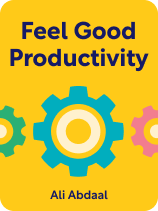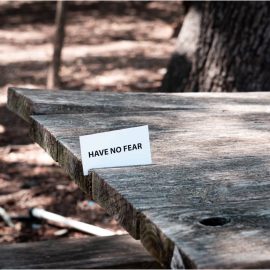

This article is an excerpt from the Shortform book guide to "Feel-Good Productivity" by Ali Abdaal. Shortform has the world's best summaries and analyses of books you should be reading.
Like this article? Sign up for a free trial here.
Do you have too much on your plate? What’s the most you can handle in a workday?
Human beings are asked to juggle a lot in their lives. Many people have jobs, families, and social lives. The only way to avoid collapsing under the weight is to prioritize everything.
Find out how to prioritize workload tasks so you can balance everything.
Be Honest About What You Can Handle
People who know how to prioritize workload tasks are in touch with reality. Be honest with yourself and others about how much you can do. Make a list of all the projects you’re working on—both professional and personal—and see if it’s realistic based on how much you can comfortably get done.
If you find that you’re regularly shifting into the grind mindset to meet all your commitments, then you’ve taken on too much and may be heading for burnout. In that case, it’s time to prioritize and simplify. Which projects on that list are most important to you? If you had to pick just one project to devote yourself to, which one would it be?
Ali Abdaal adds that, to avoid this type of burnout, you need to get comfortable with telling people “no.” Remember that other people don’t know exactly how much work you’re doing or how much energy you have, so they’ll often ask you to take on more work when that isn’t feasible for you. Trying to please everyone is a sure way to burn yourself out.
(Shortform note: Many people struggle to say “no” to anything—it feels selfish and hurtful, even when it’s necessary to do so. In Essentialism, Greg McKeown provides some tips on how to overcome that discomfort. First, remember that rejecting someone’s request doesn’t mean you’re rejecting that person, it just means they asked something of you that you aren’t currently able to give. Second, remember what you’d be giving up if you accepted that request: your time, your energy, and (in the long run) possibly your well-being. Finally, recognize that giving someone a clear “no” is much kinder than giving a noncommittal response, leaving them wondering whether they can rely on you; saying “yes” and then reneging on your promise is even worse.)
Find Your Priorities With the Eisenhower Matrix
Trimming down your to-do list can help you avoid burnout, but how do you actually do that?
Former US President Dwight Eisenhower created the Eisenhower Matrix as a simple method to prioritize items on your to-do list and, just as importantly, determine how to approach each task. The matrix is divided into four quadrants based on two variables—importance and urgency:
1. Important and urgent—do it. You should do tasks that are both significant and time-sensitive as soon as possible (or at the required time). Examples include treating a serious injury or going to a doctor’s appointment.
2. Important but not urgent—schedule it. Something that you need to do, but don’t need to do right now, should be written into your schedule so that you make sure to get to it promptly. Examples include planning for the future, working out, and making time for rest and recreation.
3. Urgent but not important—delegate it. The ideal way to handle tasks that are time-sensitive, but not important to you, is to get someone else to do them (preferably someone to whom they are important). Another way of thinking about this quadrant is time-sensitive tasks that don’t need you, specifically, to do them. Examples include running errands and attending (some) meetings.
4. Neither important nor urgent—ignore it. Something that’s not important and not time-sensitive is, by definition, something that you can safely ignore. Examples include mindlessly scrolling social media, taking unimportant phone calls, and playing video games.

———End of Preview———
Like what you just read? Read the rest of the world's best book summary and analysis of Ali Abdaal's "Feel-Good Productivity" at Shortform.
Here's what you'll find in our full Feel-Good Productivity summary:
- How to stop procrastination at its source and avoid or recover from burnout
- The crucial link between emotional health and productivity
- How to work in ways that feel energizing instead of draining






